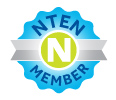Friday, December 4, 2009
GiveWell: Evaluating Marketing Messages as if they were Impact Statements
Monday, October 26, 2009
Crazy...
I couldn't agree more,
"Sitting in the session about Drupal made me think about how crazy it is that we have hundreds of PBS and NPR stations all working on the same problems, and there is not enough sharing going on. Why should we all spend tens of thousands of hours working on the same issues separately?"
Labels:
nptech drupal
0
comments
![]()
Thursday, August 6, 2009
CiviCRM's 3.0 Review: Where are the weaknesses?
- Lots of competant consultants are avaliable.
- Nonprofits can pay for hosted CiviCRM or an install.
- Documentation and online training is avaliable.
- People are extending CiviCRM and contributing back. Go CiviCase!
- Usability. This was a recent bug-a-boo that the CiviCRM team took a big swing at in the 3.0 release. The new navigation bar is pretty much to die for. The configuration checklist that makes setting up a new site a snap is underadvertised and perhaps underappreciated. Oh, and the recent items list is a basic but import feature. There is still room for improvement, but CiviCRM is certainly now on par with any competitive piece of software.
- Reporting. The new CiviReport framework addresses the basic reporting gaps and allows the community to fill most remaining reporting gaps.
- Donor management gaps. Things like postal mail merge are not tightly integrated into the application or into the CRM history. Prospecting and proposals have yet to be addressed directly.
- Accounting integration. This need to be smoothed out and improved. And the community is already on it.
- Volunteer management. Not sure this is a weakness, per se, it just hasn't been a priority.
Labels:
civicrm,
fundraising,
nten,
software
1 comments
![]()
Wednesday, August 5, 2009
Read this and be ashamed
Every once in awhile I read something that just makes me sad.
Grantmakers, for instance, often are not aware of what it actually costs nonprofits to deliver services.
Wednesday, July 8, 2009
Inspired Contributions: Intervention for Dummies
Thursday, June 18, 2009
Social Source Four Years Later
I love it when thoughts converge.
Labels:
nptech,
nten,
open source,
social source
0
comments
![]()
Monday, May 4, 2009
Platforms, people, platforms! OpenWiser
Paul's vision for WiserEarth always, always included it being open-source - there was never any back-and-forth on this matter, which is why we've always been so openly confident and deadfast in stating that WiserEarth is an open source project.
- They roll their own platform because they don't want to build on existing platforms like Drupal or CiviCRM or a million other platforms I'm not personally associated with.
- They don't make their code available to anyone (later remedied).
- They don't build a data standard or API for www.wiserearth.org .
- They have to hire someone to "clean up" their code for the open source release.
- When they release their code, significant amounts of functionality from wiserearth.org are not available.
- They can't afford to build any APIs and have to crowdsource money to raise the money for it.
- Near as I can see from their developer community, no one except the folks that paid to open source their code uses their platform.
Labels:
openwiser,
platforms,
standards,
wiserearth
3
comments
![]()
Tuesday, April 21, 2009
Comercializing a Community
- The companies are paying attention closely and communicating only through back channels. One might ask why that communication can't happen in the open.
- The companies should be neck deep into the conversation. This is the future of their businesses.
Wednesday, April 15, 2009
Drupal 7 UE Redesign: Just Copy Already
Labels:
d7ux,
drupal
0
comments
![]()
Tuesday, March 31, 2009
What it would take to start a CiviCRM ASP
- Technology first
- Customer first
- Hamster first
Idealware releases new CMS report
Labels:
drupal,
idealware,
nptech
1 comments
![]()
Monday, March 30, 2009
FINALLY, the vendor community steps up
So I look at this new Blackbaud NOW product and I must say, they have their corporate strategy right on to own all of the charity software market, soup to nuts.
Labels:
blackbaud,
civicrm,
etapestry,
nptech
4
comments
![]()
Thursday, March 12, 2009
CiviCRM Continues to Make Constituent Relationship Management Accessible to Small Groups
Labels:
civicrm,
fundraising,
nptech
0
comments
![]()
Wednesday, January 14, 2009
Operational Challenges of Scoial Enterpreneurs
I'm hosting an online discussion over at Social Edge about the operational challenges faced by social entrepreneurs. With a big focus on finding practical solutions.
http://www.socialedge.org/discussions/social-entrepreneurship/operational-challenges/
If you have a story about an operational challenge you faced or ideas on how social entrepreenurs can think about their operations and business process to maximize social impact, please drop by and leave a comment.

